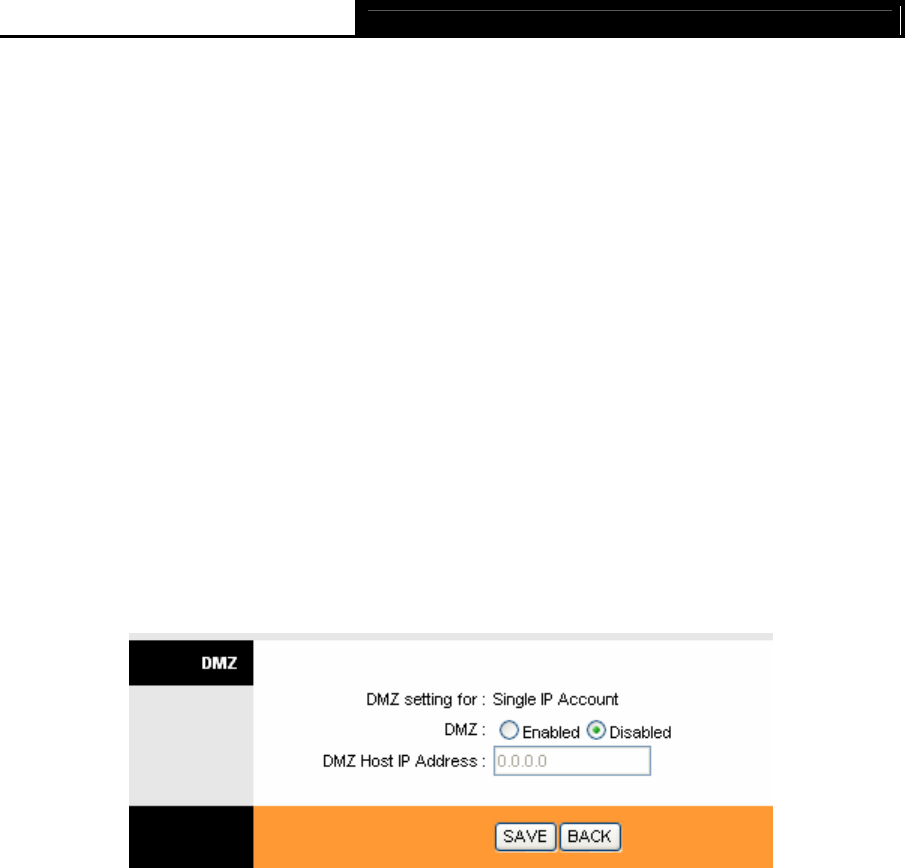
TD-8817 ADSL2+ Ethernet/USB Modem Router User Guide
34
Virtual Circuit: Enter Virtual Circuit Index that you plan to setup for the NAT function.
NAT Status: This field shows the current status of the NAT function for the current VC. You
can go to the previous screen (shown in Figure 4-6) to activate the function.
Number of IPs; This field is to specify
how many IPs are provided by your ISP for current VC.
It can be single IP or multiple IPs. We select Multiple to explain.
Note:
For VCs with single IP, they share the same DMZ and Virtual servers; for VCs with multiple IPs,
each VC can set DMZ and Virtual servers. Furthermore, for VCs with multiple IPs, they can define
the Address Mapping rules; for VCs with single IP, since they have only one IP, there is no need
to individually define the Address Mapping rule.
4.4.3.1. DMZ
Choose “Ad
vanced Setup→NAT→DMZ” in Figure 4-22, you can configure the DMZ host in the
next screen. A DMZ (demilitarized zone) is a host b
etween a private local network and the outside
public network. It prevents outside users from getting direct access to a server that has company
data. Users of the public network outside the company can access to the DMZ host.
Figure 4-23
DMZ Host IP Address: Enter the specified IP Address for DMZ host on the LAN side.
4.4.3.2. Virtual Server
Choose “Ad
vanced Setup→NAT→Virtual Server” in Figure 4-22, you can configure the Virtual
Server in the
next screen.
The Virtual Server is the server or server(s) behind NAT (on the LAN), for example, Web server or
FTP server, that you can make visible to the outside world even though NAT makes your whole
inside network appear as a single machine to the outside world.


















